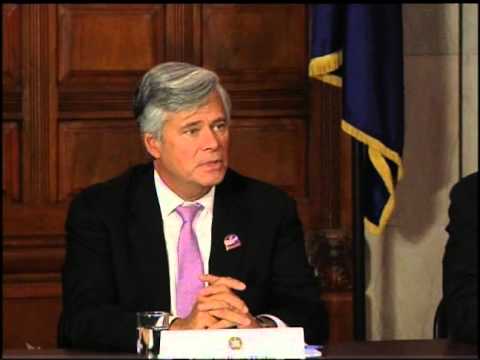
Senate Passes Measure to Boost Investment in Consumer-Generated Renewable Energy
Dean G. Skelos
May 9, 2011
Farms, Schools, and Businesses Could Receive Credit for Off-Site Power Production
The New York State Senate today passed a bill that builds upon existing net metering laws to allow certain electricity customer-generators to receive credit for off-site energy production. The legislation (S.3407A) is sponsored by Senator George Maziarz (R-C, Newfane) enables small producers to plan for their long-term energy use and would increase participation in alternative energy investment.
“This legislation will help a variety of customers—farms, businesses, local governments—take full advantage of the benefits of having installed renewable energy systems,” Senator Maziarz, Chairman of the Senate Energy and Telecommunications Committee, said. “By spreading out excess power over multiple meters instead of losing it, these ratepayers will reduce their operating costs. Importantly, when the ratepayer is a local government or school district, the taxpayers in that jurisdiction won’t have to foot quite so high a bill. This is exactly how we should be utilizing 21st century green technology to achieve not only energy savings, but cost savings.”
“Net metering has helped make alternative energy an attractive investment for public and private sectors,” Senate Majority Leader Dean G. Skelos said. “By enabling participants to link new or existing solar, wind and other technologies to multiple meters, we are eliminating a barrier that will increase investments by farmers, school districts, municipalities, businesses and others in renewable energy for the benefit of our economy and environment.”
Net energy metering or “net metering” encourages small-scale renewable energy systems by linking utilities and certain customers who generate electricity. Net refers to the difference between the electricity sold to the customer-generator by the utility and the electricity purchased by the utility from that customer-generator. In New York State, the net metering law effectively requires utilities to purchase electricity from customer-generators at the same retail price sold by the utility, up to the amount of electricity purchased by the customer-generator. Every twelve months, if the customer-generator has produced electricity in excess of the electricity purchased, then the utility is required to purchase the excess.
This bill allows certain electricity customer-generators, whose wind, solar or farm waste energy generating equipment is not immediately adjacent to the location of their energy use, to remotely net meter this resource. New York's current net metering law allows customers to install renewable energy systems connected to a single meter in order to meet their energy needs. When such systems generate energy that is not used on-site, it is sent out to the grid to be used by the utility with a credit applied to the meter or customer's account.
In some instances, it is not practical or possible to utilize electricity on the immediate site where it is produced. In other cases, customers have multiple meters for multiple buildings/facilities. This bill is particularly helpful to agricultural enterprises, municipalities, school districts and some businesses as they will be able to better control their energy costs into the future.
The goal of this legislation is to allow customers the ability to offset the total annual energy consumption of their collective accounts through the use of renewable energy generated by their system, but it is not intended to facilitate construction and net metering of facilities that routinely generate energy in excess of total annual energy consumption by the customer's accounts.
The bill has been sent to the Assembly.
###
Share this Article or Press Release
Newsroom
Go to NewsroomSenate Passes ‘Alix’s Law’
March 25, 2013
